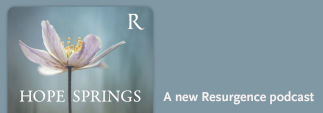I don’t know about you, but I’ve stopped picking up books about the climate crisis. For me, it happened around the time of David Wallace-Wells’s The Uninhabitable Earth. I had been reading them obsessively for 15 years, and I simply couldn’t face it any more. As a writer of a certain stripe, I get sent a lot of them, and there they are, gradually filling my bookshelves with a quiet irony, the shelves collapsing under a weight of stuff that I neither want nor need. The climate crisis demonstrates human failure on almost every level, “the greatest and widest-ranging market failure ever seen”, as Elizabeth Kolbert quotes Nicholas Stern as saying, but you can’t deny that it has, at least, been scrupulously documented.
Kolbert is one of the documenters. A staff writer at The New Yorker since 1999, she is best known for her Pulitzer Prize-winning book The Sixth Extinction (2014). Her more recent book Under a White Sky (2022) examines the possibilities and perils of a geo-engineered future. H is for Hope takes a different tack, bringing together 26 pieces adapted from previous New Yorker essays, each gorgeously illustrated by Wesley Allsbrook. The underlying theme remains the climate and our future, so it was with some trepidation – and a little excitement – that I opened the book. The cover promised hope, and that is something that we could all do with right now.
The book reads alphabetically, starting with A for Arrhenius, the Swedish scientist who in the 1890s predicted that carbon dioxide, the by-product of the ever-expanding Industrial Revolution, would come to alter the climate of the planet. As always, this is exemplary science writing, unpicking complex ideas and inventions with delicate precision. But as the essays build, the picture that develops comes to feel anything but clear. And not all that hopeful, either.
In its early pages, Kolbert describes visiting companies working on renewables and electric aircraft. She sits in flight simulators and takes a boat out to one of the largest wind turbines on the planet. There is hope to cling to here, in the rapid innovation, the inspired individuals and the collapsing price of solar, but these, to some extent, serve to highlight the gamble of us having left the most existential problem to face humanity to be fixed by the private sector and the free hand of the market. Yes, I is for the Inflation Reduction Act, President Biden’s US$350-billion pledge to stimulate climate initiatives. But the titular H is for Hope? An essay about a new type of battery, powered by the rusting action of iron. Everything concrete that Kolbert gives us to cling on to, green concrete included, seems to be driven by a start-up.
When it comes to policy and political will, things are far murkier. Q is for Quagmire, and the legislative nightmare rolling out new transmission lines to move the power generated by renewables across the United States. To give just one example, the proposed 1,160km Plains & Eastern Clean Line, planned to link wind farms in Oklahoma to consumers in Tennessee, was unable to overcome opposition from Arkansas. Such petty wrangling feels like a parable for everything. B is for Blah, Blah, Blah, Greta Thunberg’s speech at the Youth4Climate conference in 2021 that mocked world leaders’ lip service to tackling the climate crisis.
As I read on, I begin to think that whoever chose H is for Hope as a title was perhaps more concerned with marketing than an accurate description of the text. It is both a nod to Helen Macdonald’s classic H is for Hawk, and a promise of something that we all need in spades. U is for Uncertainty and X is for Xenophobia. By the time I finish Z is for Zero and close the book, I am not left with the feeling that everything is going to be OK.
But maybe this is to misread Kolbert’s project, and to misunderstand the meaning of hope. Kolbert is a science writer, she trades in facts, and she is not going to do us the favour of letting us disengage. As she reminds us with another Thunberg quote, hope is something you have to earn. Optimism, she writes, has its own inherent dangers. Maybe we have all been too distracted by the idea that someone will get a handle on this eventually, that it’s all going to get sorted out. That time has not come, and now the hour is getting late.
But it is not too late for hope. In a section on narratives, Kolbert explores how stories that “foreground ‘doom and gloom’” lead to paralysis. What we need, more than ever, are visions of where we want to get to. Hope is personal, not pragmatic. It is a story, not a rational point of view. As a writer, Kolbert understands that it is stories, in the end, that change the world. The entry for D consists of just eight words: “Despair is unproductive. It is also a sin.”
I realise I began this book looking for easy wins. I wanted someone to tell me that everything was going to be OK. I finished it understanding that things are as bad as I knew, but also feeling chided for choosing to look away. In a sense I feel reinvigorated. Wherever we find ourselves, doing something is always better than doing nothing. In doing so we will be in the company of many others. Such action can build another kind of story – and that is a far more meaningful conception of hope.
H is for Hope by Elizabeth Kolbert. Oneworld, 2024. ISBN: 9780861548668






